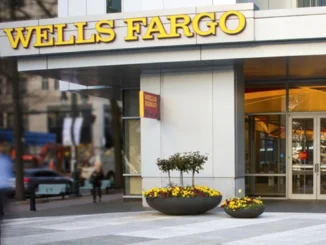Wells Fargo, the largest depository mortgage lender in America, announced Tuesday that it will officially exit the correspondent channel and also reduce its servicing portfolio, the country’s largest.
The move isn’t much of a surprise. Executives have hinted at it over the past year and Bloomberg reported in August that Wells Fargo would likely shrink or eliminate the correspondent channel. Bank executives reportedly expressed concerns about “reputational risk” when financing large amounts of loans originated from other firms.
Kleber Santos, CEO of consumer lending since his appointment in July, said the bank will continue to be the primary mortgage lender to Wells Fargo bank customers and minority homebuyers through its mortgage retail team.
“We are making the decision to continue to reduce risk in the mortgage business by reducing its size and narrowing its focus,” Santos said in a statement. “As the largest bank lender to Black and Hispanic families for the last decade, we remain deeply committed to advancing racial equity in homeownership.”
In practice, the bank’s portfolio on correspondent lending was already in free fall. From January to September, Wells Fargo originated $37 billion in the space, down 27% compared to the same period in 2021, according to Inside Mortgage Finance data. That was good for no. 3 on the correspondent leaderboard.
A primary source of mortgage servicing rights (MSRs), the correspondent channel has limitations in terms of margins because lenders must pay the network of originators that they aggregate loans from. But it does have the advantage of relying on the strength of small lenders like community banks and independent mortgage banks, which typically have good relationships with local real estate agents and are often purchase-focused.
Analysts at Keefe, Bruyette & Woods (KBW) published a report stating that Wells Fargo’s exit of the correspondent lending market could benefit other big correspondent mortgage originators, such as Pennymac Financial, Amerihome and New Rez/Caliber.
“We estimate that around 10% of [Wells Fargo’s] service volume is Ginnie Mae/FHA [Federal Housing Administration],” the KBW report states. “The reduced role of Wells Fargo in servicing should make it easier for others to grow GSE servicing.
“However, there are far fewer participants in Ginnie Mae servicing, so the reduced role of Wells in that market might result in weaker pricing, which in turn could mean higher borrower rates for FHA borrowers.”
The bank’s mortgage servicing rights book reached $9.8 billion in the third quarter of 2022, up 47% from the third quarter of 2021. Net servicing income rose 5% quarter-over-quarter to $81 million, but was down 26% year-over-year.
It’s unclear how much MSR volume Wells Fargo plans to sell.
Wells Fargo to expand SPCP
In conjunction with announcing the exit from correspondent, the bank also said it’s expanding the current $150 million investment from the Special Purpose Credit Program to include purchase loans (only refinancings were included), investing an additional $100 million to advance racial equity in homeownership, and deploying additional home mortgage consultants in local minority communities.
Wells Fargo’s future in mortgages has been the subject of widespread industry speculation for years. It was the #1 mortgage lender in America about five years ago, but like other depositories has been ceding ground to specialist nonbanks like Rocket Mortgage and United Wholesale Mortgage. Business has notably dipped since Charlie Scharf came on board in the fall of 2019 and vowed to revamp its home loans business.
After reaping strong profits during the height of the pandemic, Wells has fallen on hard times over the last year due to surging mortgage rates and home prices. Wells Fargo originated $21.5 billion in mortgage loans in the third quarter of 2022, a 37% decline quarter-over-quarter. Refinancings fell to 16% of the mix.
The bank imposed several layoffs on its mortgage employees, cutting hundreds of jobs in December.
Wells Fargo was also on the regulators’ radar. In December, the bank agreed to pay a civil penalty of $1.7 billion to settle multiple consent orders related to automobile lending, consumer deposit accounts and mortgage lending with the Consumer Financial Protection Bureau (CFPB).
The bank will report its fourth quarter earnings on Friday.



